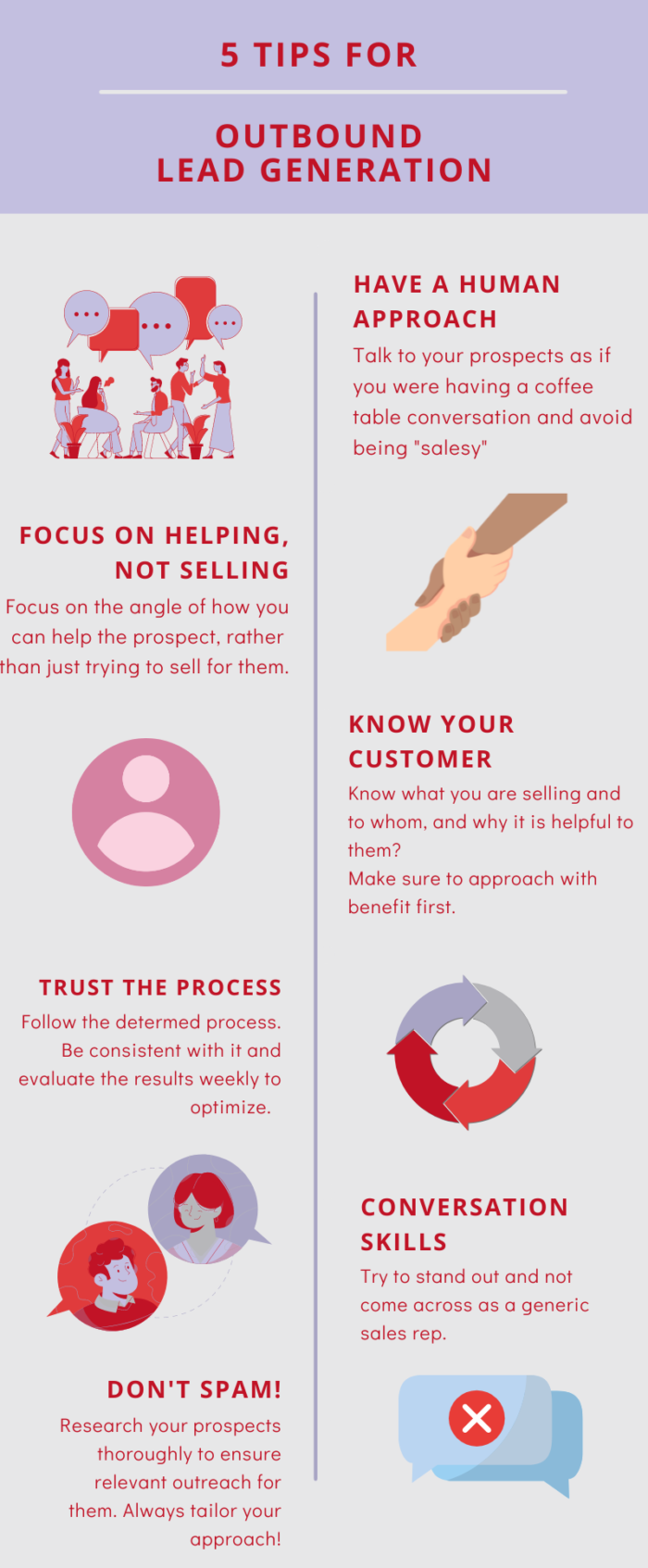Lead generation is important to every business. In essence, it is the process of bringing potential customers into your sales funnel by manually targeting, prospecting, and reaching out to potential leads. Without lead generation, a business will have to rely exclusively on organic traffic which means they are not maximizing their chances of success to make sales and expand. There are different types of lead generation and a lot of different tactics you can use. To find out exactly how outbound lead generation works, we spoke to Can Paul Urganci, Sales Manager at Aexus.
Why should you consider outsourcing lead generation?
“When you start to look at outbound lead generation, it’s important to consider your options. A lot of companies decide that they want to take care of it in-house but before we get into that, I’d like to make a few points on the benefits of outsourcing your lead generation.
The number one benefit of outsourcing is that it will give you a consistent stream of high-quality leads flowing into your sales pipeline. Many companies are experiencing one problem: the sales development representatives are usually relatively young without a lot of work experience. Companies must then invest a lot of time and resources into training them for lead generation and outreach and for them to become successful at it. Especially for when outsourcing sales for SaaS.
It’s also not uncommon that once they reach that level, the valuable staff that you just trained gets headhunted, they leave, or they want to progress in their sales role to account management. Either way, the outcome is that knowledge is leaving the lead generation department, which clearly is not always the most efficient way to go.
Outsourcing lead generation solves this problem. You don’t have to worry about training the sales representatives or losing them, and on top of that, the sales representatives in an outsourcing agency are already experienced in these activities. If you choose to work with a lead generation agency that is specialized in the technology and software sector, they already have experience in selling complex technical solutions, having in-depth knowledge of the market, and a thorough understanding of the specific domain. Additionally, they have senior sales managers in the team to add to the pool of knowledge. With outsourced lead generation, you get consistency and quality.”
How are we organizing lead generation activities?
“Strategy is the most important aspect of the process. Everything starts with defining your ICP (ideal customer profile) so that your targeting profile is clear. That way, it is also easier to determine how and where to reach them more efficiently and understand their problems and needs and how your offering can benefit them. You can start the sales activities by assessing your current assets to see if you already have customers in the relevant field. Ideally, you want to pick the low-hanging fruits. So, if you have had previous success in this area, you can use similar tactics in the new market. If you already have an existing network, this is also helpful as you have a ready list of people you can contact.
It is also necessary to have a structure in place. This gives you the guidelines you need to stay on track and prevents you from getting side-tracked. Once you’ve defined your goal, you can set the parameters around how to achieve that. You can block time for outreach activities and follow-ups. A real must though is a weekly team catch-up where you can assess the past week’s activities and the results. This gives you a chance to analyze what’s working and strategize how to continue.
Outreach can be done via phone, email, message as well as several other channels. It can help with motivation and staying positive if you set a target before you start, such as ‘7 qualified leads this week’. Don’t forget to plan out a strategy for how to reach that goal.”
Can Paul’s top 5 tips for outbound lead generation activities:
1) People like to be treated like people, so talk to prospects as if you were having a coffee table discussion in a canteen. Also, if you’re really trying to help rather than sell, that’s more valuable to the client and a useful way to formulate your pitch.
2) It’s important to fully understand what you are selling and why you are targeting a specific prospect. In tech particularly, you should translate the complex benefits in a way that is easy for the prospect to understand.
3) Follow the process and evaluate the results every week to hone the process to perfection.
4) A good SDR knows how to not come across as a typical, generic sales representative. They can build rapport quickly and have excellent conversational skills.
5) No one likes a spammer. Research your prospects thoroughly so you can ensure your outreach has relevance to them. I cannot stress enough the importance of a tailored approach.

